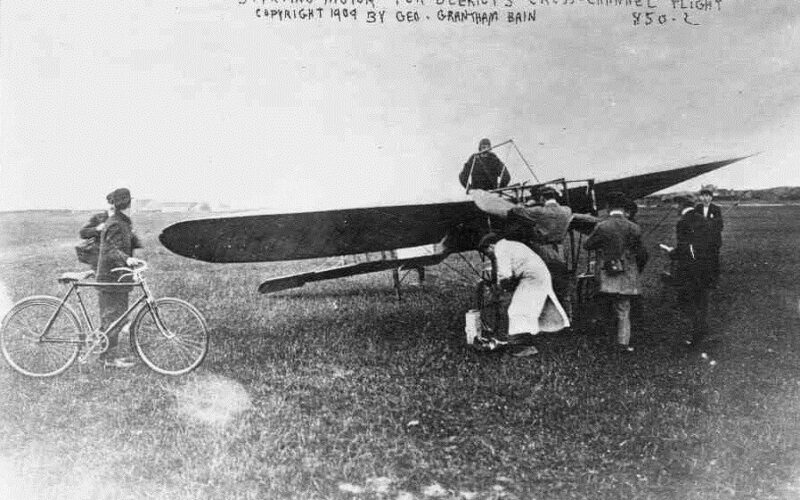On the morning of July 25, 1909, Louis Blériot landed at Northfall Meadow near Dover Castle, England. A relative unknown, Blériot had just achieved the first Channel crossing by aeroplane.
The flight between Calais and Dover made Blériot an instant celebrity, captivating the public in a new world of exciting possibilities during a pioneering era of firsts in aviation.
The life of Louis Blériot
Louis Blériot was born in 1872 in Cambrai, Northern France. Throughout school, Louis was very studious and frequently won class prizes, including one for his engineering drawings. After graduating from École Centrale, renowned for its engineering department, Louis fulfilled compulsory French military service in the artillery regiment.
By 1897, aged 25, Blériot had developed the world’s first practical headlamp for automobiles and had his own company with a showroom in Paris, supplying his lamps to major French car manufacturers including Renault.
With the success of his business, Blériot was able to fund research into aviation, something he had always been passionate about and had shown further interest in following the display of Clément Ader’s Avion III at the 1900 Paris Exposition.
By 1905, Blériot had met Gabriel Voisin, a like-minded enthusiast who had already built his own glider plane. The two struck up a partnership that brought Blériot’s early aircraft designs to life. In the three years that followed, Blériot built seven aircraft models, each improving on the previous design through trial and error including some near misses for Blériot himself.
Success came with the design of the Blériot IX, X and, in particular, the XI. First flying on January 18, 1909, the Blériot XI model would go on to be the most successful model with military variants bought by many countries worldwide.
Crossing The Channel
Back in October 1908, British newspaper the Daily Mail had offered a prize fund of £500 for the first Channel crossing by aeroplane, but as the year passed without any serious contenders, the prize was doubled to £1,000. Many considered the challenge as a publicity stunt for the paper, believing there was no chance that the prize could be won.
In 1909 however, Hubert Latham emerged as a favorite to win the prize. Flying an Antoinette IV monoplane, he set out on the morning of July 19 with huge crowds watching as he departed for England. Around six miles from the English coast, faced with engine trouble, Latham made the world’s first water ditching before being recovered by a French vessel and returning to France.
On the same day, Blériot wrote to the Daily Mail informing them of his intention to make an attempt at the crossing in his Blériot XI aircraft. In July 21, he arrived in Calais ahead of the flight.
At 4.15am on July 25, Blériot made a short trial flight in front of a gathering crowd at Calais. At 4.41am, once the sun had risen, he took off on his history-making attempt.
Flying without a compass and in poor visibility, Blériot was flying at approximately 45mph and at an altitude of 250ft. He spotted the English coast and landed on cliffs near the town of Dover 36 minutes and 30 seconds after departing France.
(Credit: Public domain)
Blériot brought Europe a little closer to Britain that July morning, gaining the world’s attention and earning his place in the history books. Following his success, the Blériot XI model had received more than 100 orders by the end of 1909.
Throughout his life, Blériot remained committed to aviation, achieving many feats. In 1927, at the age of 55, he greeted a 25-year-old Charles Lindberg at Le Bourget airfield following his transatlantic solo flight. Both aviators had defied expectations by flying over vast areas of water.
In 1930, Blériot announced the Blériot Trophy, an award for the first aircrew to fly at an average speed of over 2,000km per hour. The award was presented 25 years after Blériot’s death, on May 27, 1961, to the crew of a USAF Convair B-58 bomber which during flight, had sustained a speed of 2,095 km per hour.
The original Blériot XI plane used for Blériot’s historic flight is on display at the Musée des Arts et Métiers in Paris.


